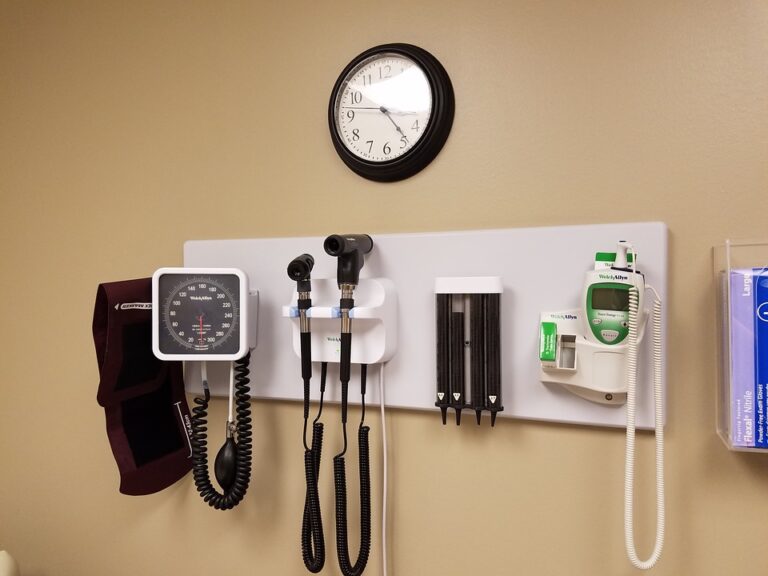Book Appointment Now

Evidence-Based Practice for Patient Satisfaction
Evidence-Based Practice for Patient Satisfaction highlights the essential role of integrating research-driven interventions into healthcare to improve patient experiences and outcomes. Patient satisfaction is a key indicator of healthcare quality, reflecting not only clinical effectiveness but also interpersonal care and emotional well-being. Evidence-based practice (EBP) provides healthcare professionals, particularly nurses, with the tools to deliver personalized, high-quality care tailored to patient needs and preferences. By employing EBP, nurses can improve communication, address physical and emotional concerns, and ensure that care decisions are supported by the latest research. This approach not only enhances patient satisfaction but also strengthens professional competency, creating a win-win scenario for both patients and healthcare providers.
Get a custom paper help about evidence-based nursing practice for Patient satisfaction
Order Custom Nursing Paper
The Relationship Between EBP and Patient Satisfaction
Patient satisfaction is closely linked to the application of evidence-based interventions that address individual needs and expectations. EBP ensures that care decisions are informed by the latest research, leading to improved clinical outcomes and a more personalized approach to care. For example, evidence-based pain management strategies, such as multimodal analgesia, have been shown to improve patient comfort and reduce recovery times, directly enhancing satisfaction levels (Melnyk & Fineout-Overholt, 2019).
Moreover, EBP fosters effective communication, a key determinant of patient satisfaction. Studies highlight that patients value clear explanations about their diagnosis, treatment options, and anticipated outcomes. Nurses trained in evidence-based communication techniques, such as shared decision-making, can build trust and empower patients to take an active role in their care (O’Hagan et al., 2014). This collaborative approach not only increases satisfaction but also promotes adherence to treatment plans, further improving health outcomes.
In addition to clinical benefits, EBP improves the emotional and psychological dimensions of care. For instance, implementing evidence-based practices to address anxiety in hospitalized patients, such as guided imagery or relaxation techniques, enhances the overall patient experience. These interventions reflect an understanding of holistic care, which is increasingly prioritized in patient satisfaction metrics (Pomey et al., 2020).
Impact of EBP on Nurses’ Professional Competency
EBP significantly enhances the professional competency of nurses by fostering critical thinking, decision-making skills, and continuous learning. Nurses who engage with EBP are better equipped to interpret research findings and apply them to clinical scenarios, ensuring that their practice remains current and effective. For example, incorporating evidence-based protocols for infection control, such as proper hand hygiene and catheter management, improves both patient safety and the nurse’s confidence in their clinical abilities (Loftus et al., 2019).
Furthermore, EBP encourages nurses to participate in interdisciplinary collaboration, which is essential for addressing complex patient needs. By working alongside physicians, therapists, and other healthcare providers, nurses gain insights into diverse perspectives and enhance their problem-solving capabilities. This collaborative approach, supported by evidence-based frameworks, contributes to professional growth and better patient outcomes.
The emphasis on professional development through EBP also aligns with nurses’ career advancement goals. Participation in evidence-based projects, such as quality improvement initiatives, demonstrates leadership and innovation, positioning nurses as key contributors to healthcare transformation. These opportunities enhance job satisfaction, reduce burnout, and reinforce a commitment to lifelong learning (Melnyk & Fineout-Overholt, 2019).
Barriers to Implementing EBP for Patient Satisfaction
Despite its benefits, implementing EBP to enhance patient satisfaction faces several barriers. Limited access to research resources, such as medical journals and databases, can hinder nurses’ ability to stay informed about the latest evidence. This challenge is particularly pronounced in resource-constrained healthcare settings, where funding for professional development is limited (Saunders & Vehviläinen-Julkunen, 2016).
Time constraints also pose significant obstacles. Nurses often juggle multiple responsibilities, leaving little time to review research or implement evidence-based interventions. Organizational support, such as allocating time for training and EBP activities, is critical for overcoming this barrier.
Additionally, resistance to change among staff can delay the adoption of EBP practices. Some nurses may feel hesitant to modify established workflows or question traditional practices, particularly in hierarchical healthcare environments. Addressing these concerns requires effective leadership and a supportive culture that values innovation and continuous improvement (Loftus et al., 2019).
Strategies to Enhance EBP for Patient Satisfaction
Enhancing EBP to improve patient satisfaction requires targeted strategies at both the organizational and individual levels.
- Education and Training: Providing nurses with training in research appraisal and evidence implementation ensures they have the skills needed to integrate EBP into their practice. Workshops, online courses, and mentorship programs are effective tools for building competency (Melnyk & Fineout-Overholt, 2019).
- Technology Integration: Leveraging electronic health records (EHRs) and clinical decision-support systems (CDSS) enables real-time access to evidence-based guidelines, streamlining the application of EBP at the bedside.
- Leadership Engagement: Nurse leaders play a pivotal role in fostering a culture of EBP by modeling evidence-based decision-making, encouraging staff participation in research projects, and recognizing contributions to quality improvement initiatives (Saunders & Vehviläinen-Julkunen, 2016).
- Patient Involvement: Actively involving patients in care decisions through shared decision-making not only enhances satisfaction but also ensures that care plans align with their values and preferences.
Conclusion
Evidence-Based Practice for Patient Satisfaction underscores the importance of research-driven interventions in delivering high-quality, patient-centered care. By addressing individual needs, improving communication, and enhancing emotional well-being, EBP directly contributes to higher satisfaction levels. Moreover, the integration of EBP strengthens nurses’ professional competency, equipping them with the skills and confidence needed to navigate complex clinical scenarios. Despite challenges such as limited resources and resistance to change, strategies such as education, technology integration, and leadership engagement can facilitate the widespread adoption of EBP. Ultimately, fostering a culture of evidence-based care benefits both patients and healthcare professionals, ensuring a sustainable approach to quality improvement.
References
- Loftus, T. J., et al. (2019). Clinical decision support in surgical practice: Improving patient outcomes through evidence-based practice. Journal of Surgical Research, 244, 444-452.
- Melnyk, B. M., & Fineout-Overholt, E. (2019). Evidence based practice in nursing & healthcare: A guide to best practice (4th ed.). Wolters Kluwer.
- O’Hagan, S., et al. (2014). The role of communication in patient satisfaction in an emergency department setting. Emergency Medicine Journal, 31(5), 414-418.
- Pomey, M. P., et al. (2020). Patient partnership in quality improvement of healthcare services: Patients’ inputs and challenges faced. Patient Experience Journal, 7(1), 56-67.
- Saunders, H., & Vehviläinen-Julkunen, K. (2016). The state of readiness for evidence-based practice among nurses: An integrative review. Worldviews on Evidence-Based Nursing, 13(1), 15-25.







